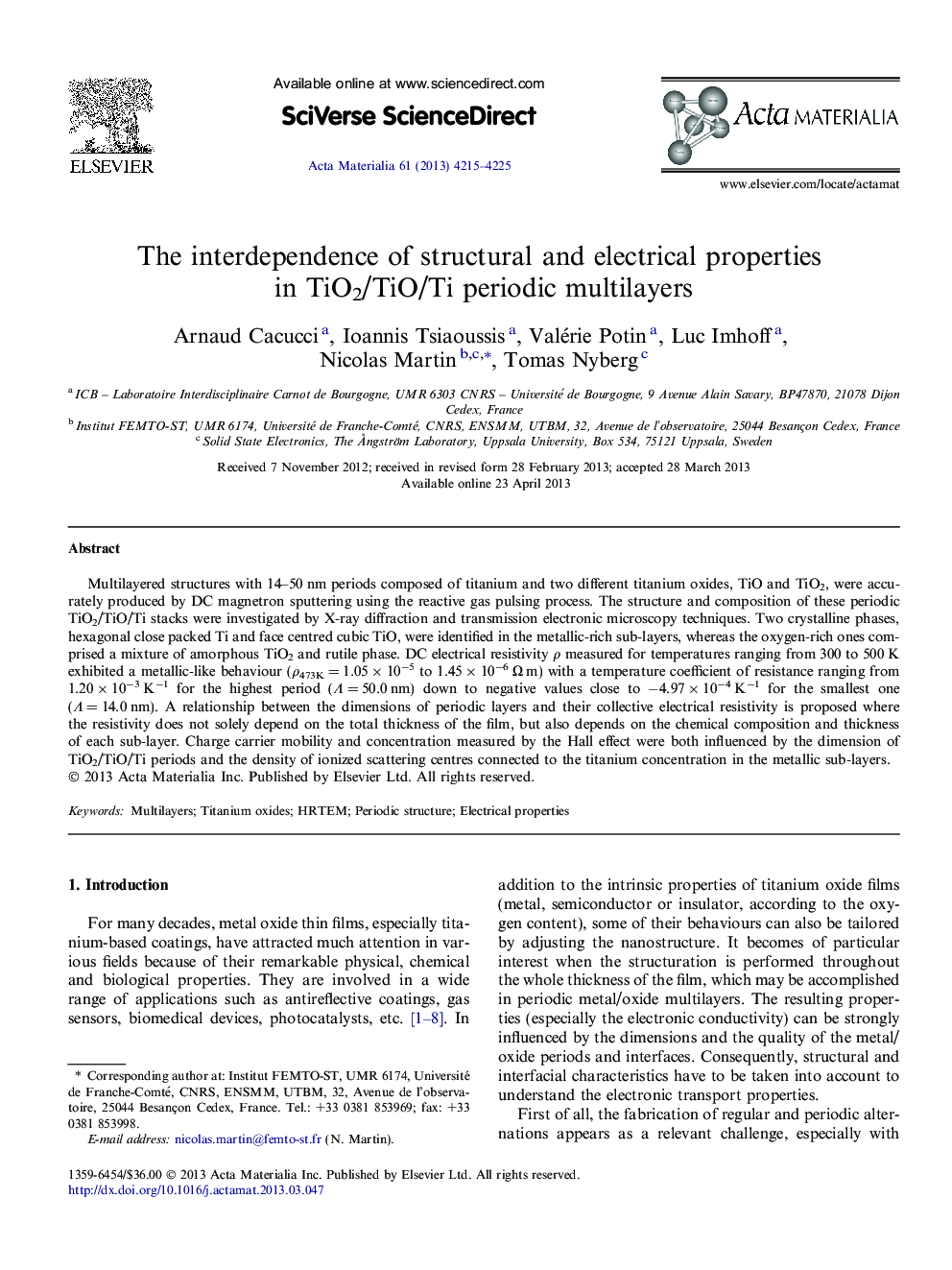| Article ID | Journal | Published Year | Pages | File Type |
|---|---|---|---|---|
| 10620166 | Acta Materialia | 2013 | 11 Pages |
Abstract
Multilayered structures with 14-50 nm periods composed of titanium and two different titanium oxides, TiO and TiO2, were accurately produced by DC magnetron sputtering using the reactive gas pulsing process. The structure and composition of these periodic TiO2/TiO/Ti stacks were investigated by X-ray diffraction and transmission electronic microscopy techniques. Two crystalline phases, hexagonal close packed Ti and face centred cubic TiO, were identified in the metallic-rich sub-layers, whereas the oxygen-rich ones comprised a mixture of amorphous TiO2 and rutile phase. DC electrical resistivity Ï measured for temperatures ranging from 300 to 500 K exhibited a metallic-like behaviour (Ï473K = 1.05 Ã 10â5 to 1.45 Ã 10â6 Ω m) with a temperature coefficient of resistance ranging from 1.20 Ã 10â3 Kâ1 for the highest period (Π= 50.0 nm) down to negative values close to â4.97 Ã 10â4 Kâ1 for the smallest one (Π= 14.0 nm). A relationship between the dimensions of periodic layers and their collective electrical resistivity is proposed where the resistivity does not solely depend on the total thickness of the film, but also depends on the chemical composition and thickness of each sub-layer. Charge carrier mobility and concentration measured by the Hall effect were both influenced by the dimension of TiO2/TiO/Ti periods and the density of ionized scattering centres connected to the titanium concentration in the metallic sub-layers.
Related Topics
Physical Sciences and Engineering
Materials Science
Ceramics and Composites
Authors
Arnaud Cacucci, Ioannis Tsiaoussis, Valérie Potin, Luc Imhoff, Nicolas Martin, Tomas Nyberg,
